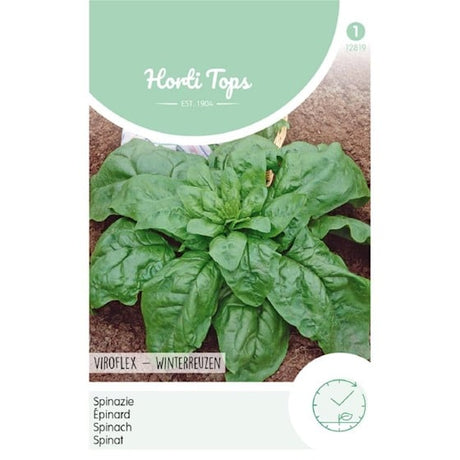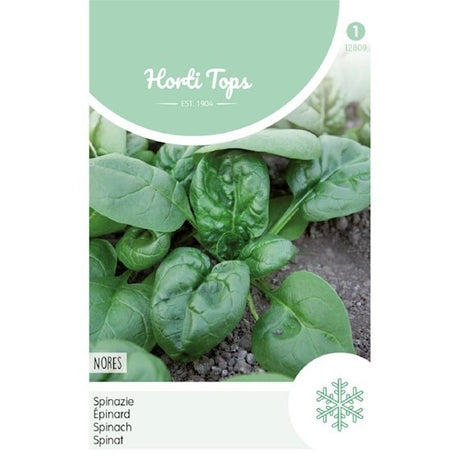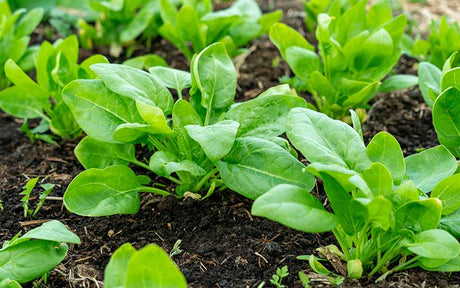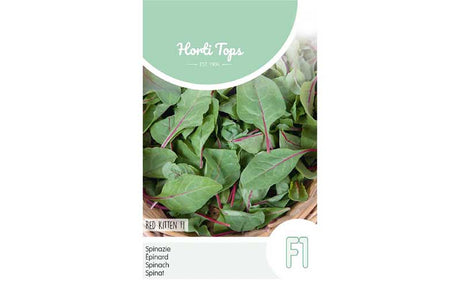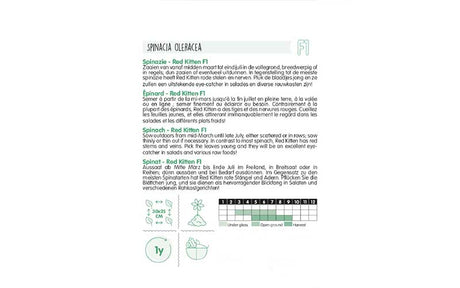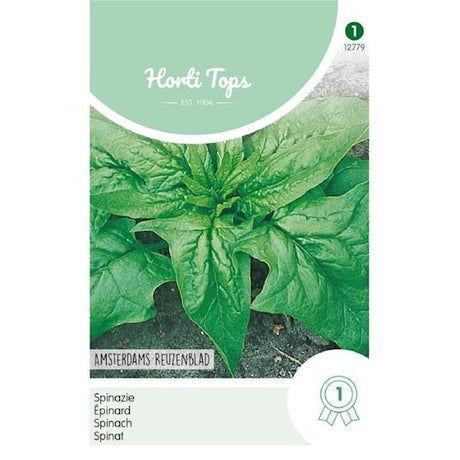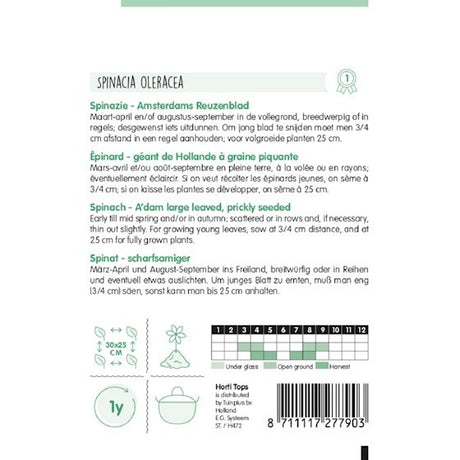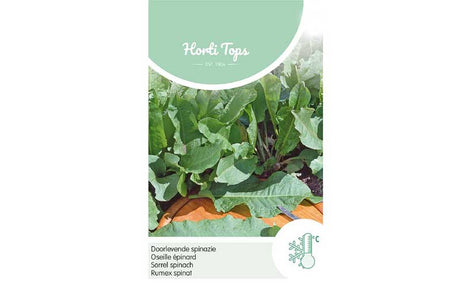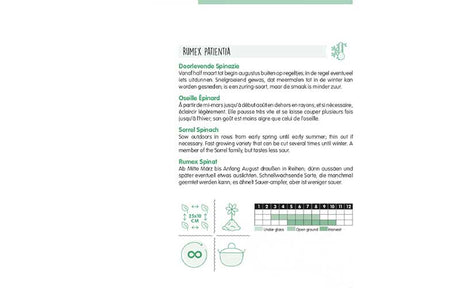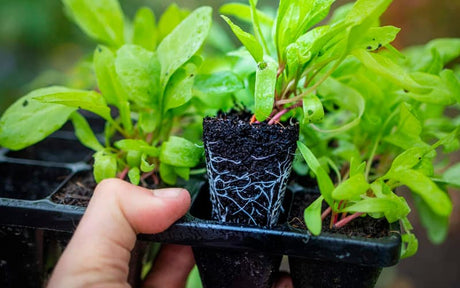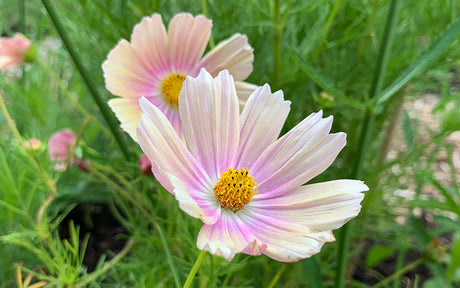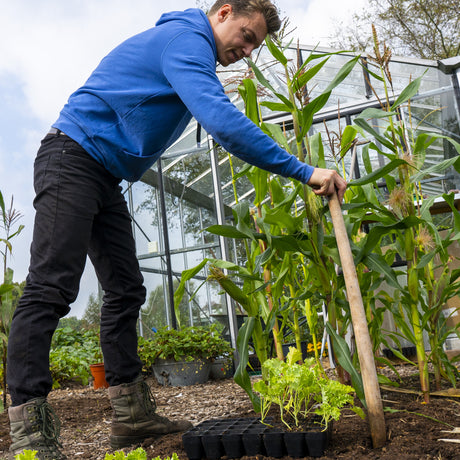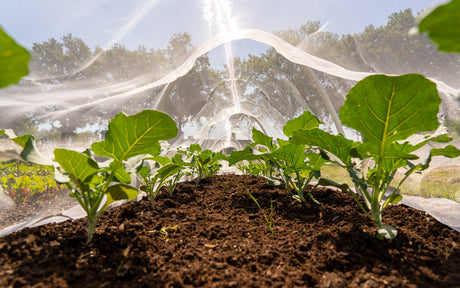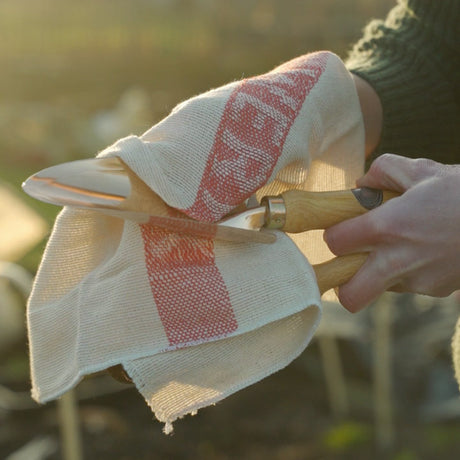Spinach is a superfood that's as easy to grow as it is nutritious, making it a favorite among gardeners of all skill levels. Rich in iron, vitamins, and antioxidants, spinach can be harvested as tender baby leaves or allowed to mature for fuller flavors. Our guidance will help you successfully cultivate spinach, ensuring a steady supply of this healthy green right from your garden.
- 1,95Unit price /Unavailable
- 1,95Unit price /Unavailable
- 1,95Unit price /Unavailable
- 1,95Unit price /Unavailable
- 3,25Unit price /Unavailable
- 1,75Unit price /Unavailable
- 2,75Unit price /Unavailable
Grow Nutrient-Packed Spinach Easily in Your Garden
Soil Preparation For Spinach
Spinach prefers a well-drained soil rich in organic matter. Before planting, incorporate or add plenty of compost on top (using the no-dig method) to enrich the soil.
Sowing Spinach Seeds
Plant spinach seeds directly in the ground about 0.5 cm deep. We like to sprinkle them in rows and don't thin them out. They will give plenty of harvest and this takes little to no time to do. For a continuous supply, consider succession planting every few weeks throughout the growing season.
Watering Requirements Spinach
Spinach needs consistent moisture to grow fast and remain tender. Water regularly to keep the soil moist but not soggy, as overwatering can lead to root rot and other fungal diseases. Mulching around the plants can help retain soil moisture and suppress weeds, but only do this in climates that don't get to much rain.
Sunlight and Temperature Spinach
While spinach does well in full sun, it appreciates some shade in warmer climates to prevent bolting (going to seed prematurely). If temperatures start to rise, providing some afternoon shade can extend your spinach growing season. Spinach can tolerate frost so its a great addition for winter sowings to harvest almost year-round.
Spinach Harvesting Techniques
You can start harvesting baby spinach leaves as soon as they're large enough to eat, typically 20-30 days after sowing. For full-sized leaves, wait about 40-50 days. Harvest leaves from the outer part of the plant first, allowing the younger inner leaves to continue growing. This method can extend the productivity of each plant.
Pest Management For Spinach
We never really get to many pests with our spinach sowings but some people get slug issues or light damage from aphids. This is easily dealt with using ECO Pesticides


